fine bone china
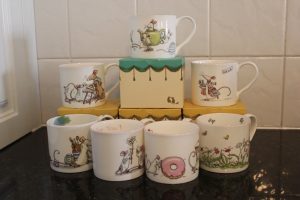

This is my ever growing collection of fine bone china mugs. I generally drink double espressos, so about 150ml of coffee, and I really like drinking from these mugs! They are illustrated with rollicking and frolicking mice and are a pleasure to use.
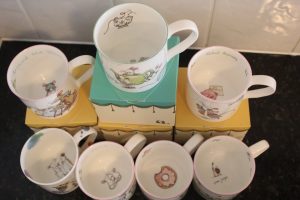

I first discovered Anita Jerman’s whimsical designs years ago when my son gave me a card featuring her Two Bad Mice design. He was attracted to it initially as the mice are very similar to ones I’ve been drawing for years. Loved the card and my first Two Bad Mice 300ml mug followed. These fine bone china mugs are hand decorated in Staffordshire, England and portray the mice involved in everyday activities, such as eating cake (Sugar Mice), painting (Art Club), shopping (Retail Therapy) , frolicking with the butterflies and flowers (Urban Jungle) and enjoying each other’s company (For You)
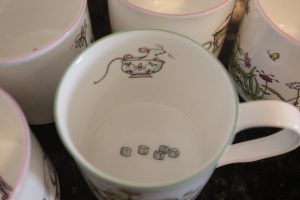

The thin lip makes these mugs lovely to drink from. They are illustrated on the outside and the inside and there’s always a little message at the bottom, to entertain you when you’ve drained the last drop!
spring flowers
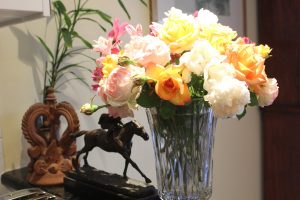

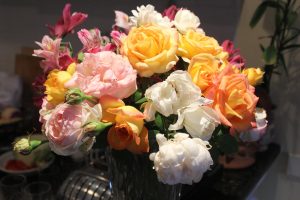

This has been a bumper year for all the spring flowers in Western Australia. The roses have been blooming like mad! Some of these are from my Mother’s garden and some are from our garden. The flowers at the back are alstromerias which grow year after year and would happily inhabit the entire garden. They need to be kept firmly in their assigned bed!
grazing platters and a bed bowl
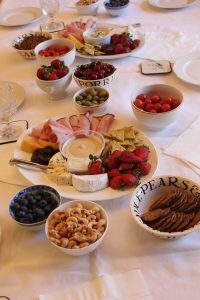

I can’t remember what we called platters of finger food before they became grazing platters. Surrounded by bowls of other finger friendly foods, the platters are an easy way to entertain. I made these as it was my husband’s turn to host his book club this week and the focus is on the books, so easy to handle food is essential. Nothing hot or fussy, just tasty, easily picked up, finger food.
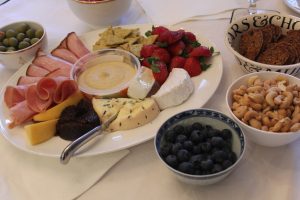

I place various cold meats and cheeses, a soft, a firm and a blue veined, on the platter, then add quince paste ( plus fig and walnut paste this time), strawberries, two types of meat and a variety of crackers. I put a tub of hommus or dip in the centre of each platter, too. Other bowls held cherries, blueberries, cherry tomatoes, cashews, olives and more crackers. Add side plates and napkins and the food is done.
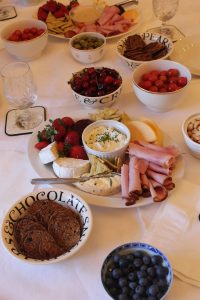

This morning I finished reading Ian Rankin’s latest book, A Song For The Dark Times in bed, before I got up. The minute I put it down my husband picked it up and didn’t move for a long time. I made him tea and took him a bed bowl, a little relative of the grazing platter, involving cashews, strawberries, cherries and blueberries with some crackers. He’s not a big fan of cheese, which is good, as I’m happy to eat the leftovers from the previous nights feasting. Bowls are easier than flat plates for eating in bed.
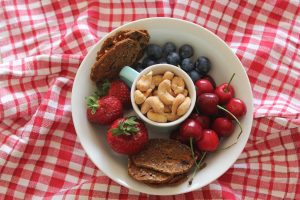

reading
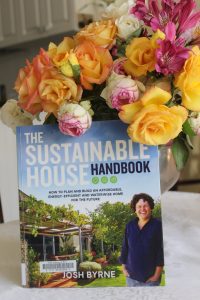

This book is about planning and building affordable energy efficient and water wise housing. Many of the tips are relevant to existing houses and also a good reminder about doing easy things to use less water and energy.
Josh Byrne is a presenter on Gardening Australia, a weekly gardening program on television. He is globally recognised for his research into efficient use of water and energy. His ideas about using main stream builders and materials to create efficient housing make his recommendations affordable. The process he describes for choosing where to build and how to build is easily understood and often thought provoking.
Byrne shares ideas about monitoring the ‘effectiveness ‘ of your existing house and also how to maximise these aspects in new builds. Each of the eight chapters encourages consideration of each step in building, renovating or just refining current aspects of your house to make it more efficient.
An interesting book, full of information. As usual, I borrowed it from the library. A quick search of your local libraries online catalogue will reveal many books about making the most of your local environment and living more efficiently.
Some saints
December 4th is Saint Barbara’s Day. Venerated as an Auxiliary Saint or Holy Helper, she is the patron saint of artillerymen and miners. In more recent years her authenticity was considered questionable and she was removed from the General Roman Calendar in 1969.


December 6th is Saint Nicholas Day. Saint Nicholas, a Greek priest was a Bishop in the early Catholic Church. He gave up all his belongings to follow Christ. He gave freely to needy people, but especially to children. He was well known for throwing gold coins into the windows of poor homes. St Nicholas became part of European culture.
In the 1800s, in America, Saint Nicholas began to evolve into Santa Claus, but gold coins, both real and chocolate ones still feature for many children at Christmas, a remnant of Saint Nicholas’s kindness and charity.
